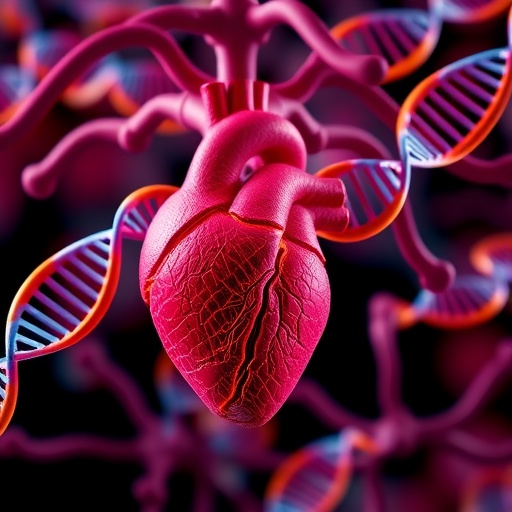In the quest to develop effective therapies for cardiac diseases, researchers are increasingly turning their attention to lipid nanoparticle (LNP)−mRNA complexes. These innovative delivery systems hold significant promise owing to their ability to deliver genetic material directly into cardiomyocytes, the muscle cells of the heart. However, the realization of their full potential has been hampered by poor transfection efficiency. Furthermore, existing in vitro methodologies lack reliable predictive capabilities for transfection efficacy, making it challenging to identify the most suitable LNP formulations for cardiac applications.
Recent advancements have led to the establishment of a novel microphysiological system (MPS) designed specifically for the cardiac environment. This unique platform incorporates human induced pluripotent stem cell-derived cardiomyocytes engineered to express Cre-reporter constructs. The MPS was meticulously crafted to mimic the in vivo conditions of the heart, thereby offering a more accurate depiction of how LNP−mRNA complexes behave in a physiological context. By utilizing this system, researchers sought to uncover formulations that not only diffuse effectively within three-dimensional cardiac tissues but also exhibit high rates of genetic transfection.
Initial experiments demonstrated a clear correlation between LNP diffusion characteristics and transfection rates within the cardiac micromuscles. Among the various formulations tested, those containing an acid-degradable polyethylene glycol (PEG)−lipid exhibited remarkable performance. The incorporation of this specific lipid component enhanced the ability of the LNPs to penetrate cardiac tissue while also facilitating the efficient release of mRNA payloads within the target cells. This advancement represents a significant leap forward in the development of non-viral gene delivery systems for cardiac therapies.
The results garnered from the cardiac MPS were compelling. When subjected to in vivo validation, LNP−mRNA complexes, including those carrying luciferase and CRE mRNA constructs, yielded transfection efficiencies that aligned closely with the outcomes predicted by the MPS. In particular, the use of acid-degradable PEG-LNPs resulted in dramatically improved transfection rates within heart tissues, while simultaneously minimizing off-target effects commonly observed with traditional LNP formulations, particularly in the liver. This finding was a crucial aspect of the study, as it highlights the potential of targeted therapies that reduce unwanted side effects.
Moreover, the study elucidated the importance of optimizing LNP formulations beyond mere transfection rates. Understanding how different lipid compositions affect cellular uptake, endosomal escape, and ultimately gene expression within cardiomyocytes is essential for developing effective cardiac gene therapies. The integration of advanced materials like acid-degradable PEG lipids appears to offer a solution that not only enhances diffusion but also aligns with the requirements for precision medicine in treating cardiac conditions.
The implications of these findings extend beyond the laboratory. The capacity to accurately screen and identify superior LNP formulations using the MPS paradigm opens doors to rapid, efficient development pathways for novel cardiac therapies. As the landscape of cardiac treatment evolves, harnessing technologies like LNP−mRNA complexes coupled with innovative screening methods will enable clinicians to offer more personalized and effective therapeutic options to patients suffering from diverse cardiac ailments.
Furthermore, this study emphasizes the transformative potential of MPS technologies in biomedical research. By simulating human tissue environments, MPS systems can provide critical insights that traditional two-dimensional cell cultures fail to deliver. This alignment with physiological conditions enhances the predictive power of in vitro assays, thereby streamlining the translation of research findings into clinical applications.
As the research community continues to refine and expand the capabilities of LNP−mRNA delivery systems, a concerted effort is necessary to address the existing gaps in knowledge. Investigating various lipid compositions, tailoring surface properties, and optimizing delivery methods will be key areas of focus. Collectively, these efforts stand to revolutionize the landscape of cardiac gene therapy, steering it toward new horizons of efficacy and safety.
In summary, the emergence of a microphysiological system dedicated to screening lipid nanoparticle−mRNA complexes represents a pivotal advancement in cardiac therapeutics. The realization of efficient transfection rates in cardiomyocytes, matched with decreased off-target delivery, sets the stage for significant progress in the treatment of cardiac diseases. As researchers continue to elucidate and implement these cutting-edge strategies, the landscape of cardiac care is poised for transformation.
In conclusion, the creative application of this innovative MPS enables a more strategic approach to gene delivery in the heart, potentially leading to groundbreaking therapies that can address heart disease more effectively. Harnessing the full potential of LNP−mRNA complexes and optimizing their delivery mechanisms through intricate screening could very well define the next wave of cardiac medicine, paving the way for previously unimagined treatment possibilities.
Subject of Research: Gene transfection via lipid nanoparticle (LNP)−mRNA complexes for cardiac therapy
Article Title: A microphysiological system for screening lipid nanoparticle−mRNA complexes predicts in vivo heart transfection efficacy
Article References:
Neiman, G., Costa, M.W., Han, H. et al. A microphysiological system for screening lipid nanoparticle−mRNA complexes predicts in vivo heart transfection efficacy.
Nat. Biomed. Eng (2025). https://doi.org/10.1038/s41551-025-01523-4
Image Credits: AI Generated
DOI: https://doi.org/10.1038/s41551-025-01523-4
Keywords: Gene therapy, lipid nanoparticle, mRNA delivery, cardiac disease, microphysiological systems, cardiomyocytes, transfection efficiency.




